With the director of the Episcopal Cathedral and Diocesan Museum through the Mainz Cathedral
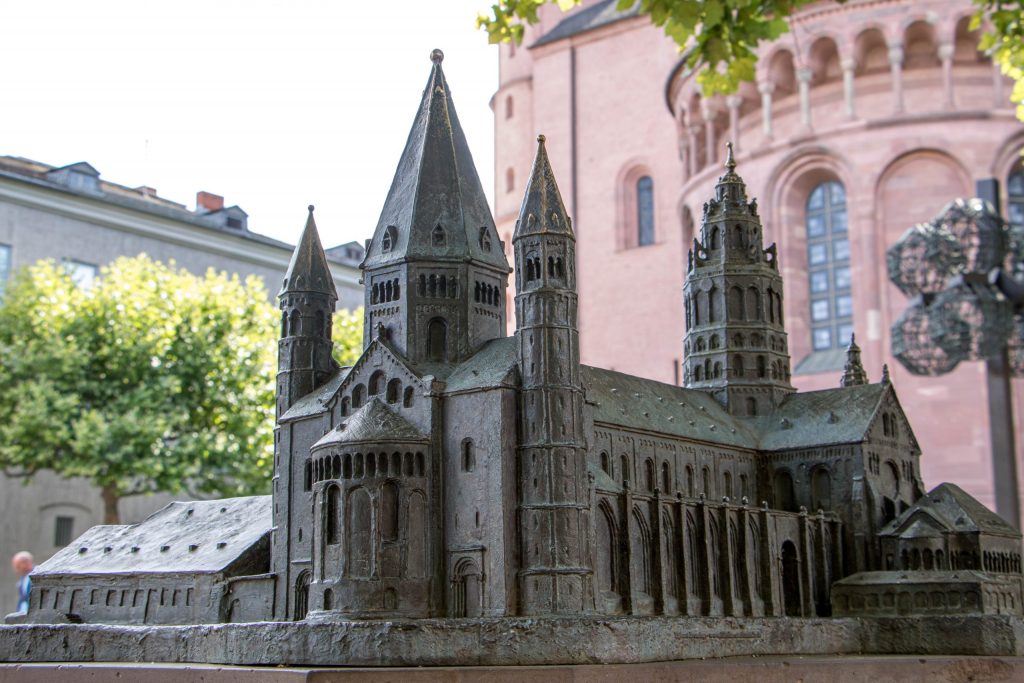
Built the Mainz Cathedral over a thousand years ago as the coronation church of the empire and the spitting image of the ancient St. Peter's Basilica in Rome. Once designed as a three-nave Romanesque pillar basilica, it was the seat of the second man in the state in the Holy Roman Empire. The archchancellor and the head of the electoral college ruled from here. Mainz Cathedral is the highlight and centerpiece of the city of Mainz. I have an appointment with Dr. Winfried Wilhelmy, director of the Episcopal Cathedral and Diocesan Museum in Mainz. He will guide me through the church and the museum behind the reddish sandstone walls.

On the trail of history in Mainz
The Cathedral Museum is located in the former chapter rooms and the original cloister of Mainz Cathedral. Here in the cloister I meet Dr. Wilhelmy. We literally walk in the footsteps of history. The floor beneath our feet consists in part of old tombstones. They are witnesses to the former purpose of this place. The cloister was a burial place and at the same time a connection between the chapter houses and the church.
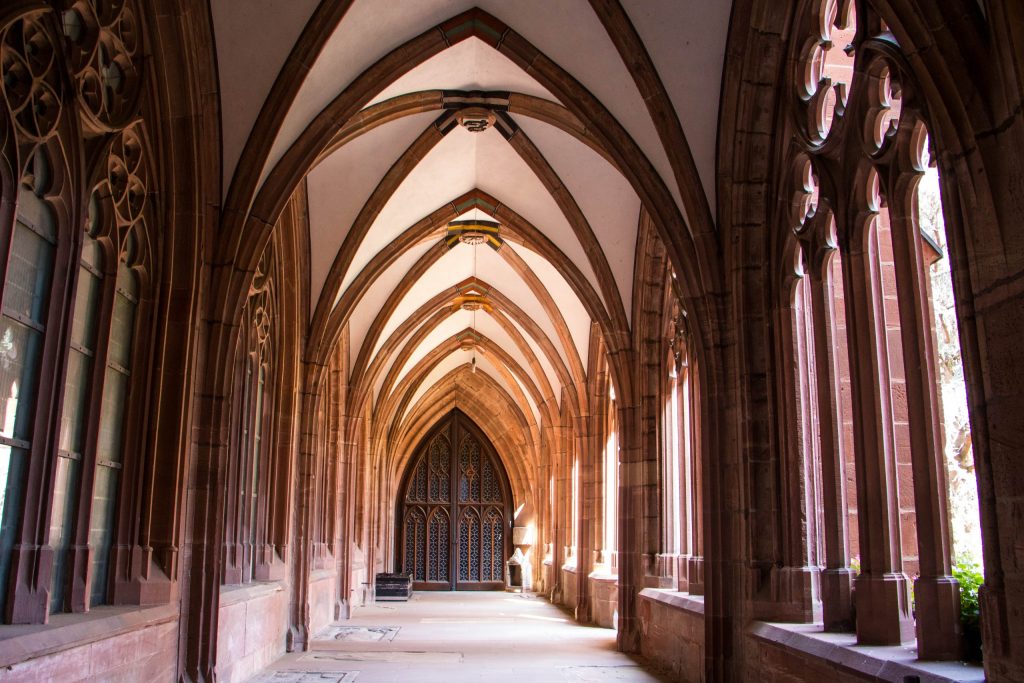
The sandstone walls are open to the courtyard through large window arches, yet I can already feel the coolness and tranquility emanating from the thick walls. I have left the busy market on the other side of the stones completely behind me.
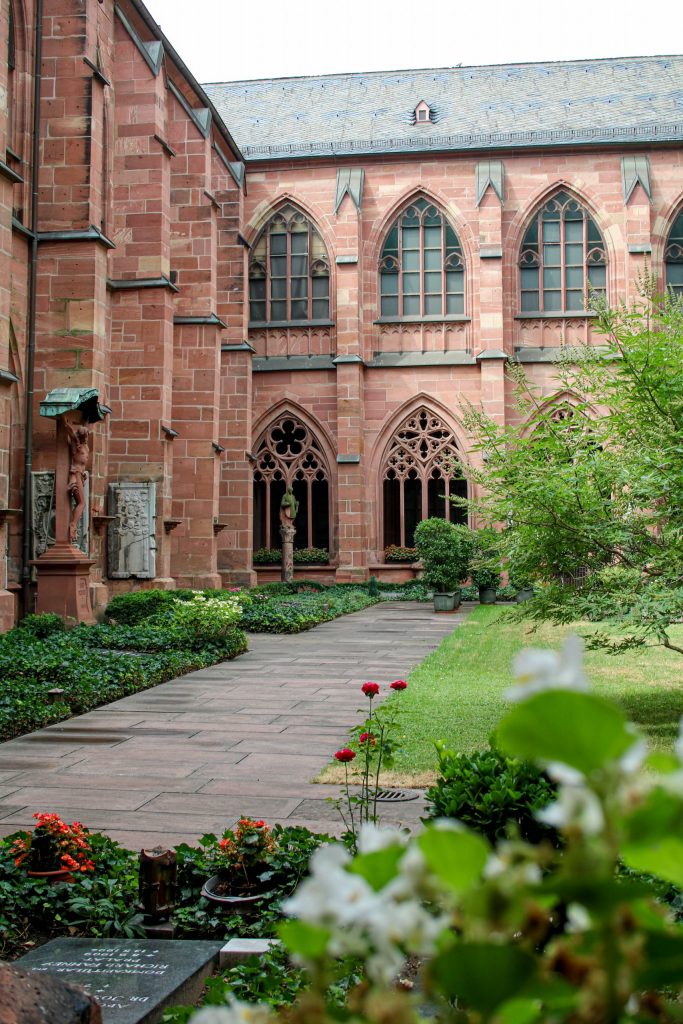
"For centuries, things have somehow gone on".
We approach the cathedral and on the way enter Dr. Wilhelmy's favorite place, the Memorie. This is part of the west wing of the cloister. In the first years after 1200 here was a chapter house with the character of a meeting room. This room is much more present to Dr. Winfried Wilhelmy as a place of burial and memorial of the dead. That is where the name comes from: Memorie. Dr. Wilhelmy explains to me his fascination with this part of the cathedral: "It breathes this very remembrance of the dead, which I find so very touching, however, because you can simply trace this sequence of living and dying there like in no other place within the cathedral." I follow his words and realize that the thought of death in this place is not so scary. "I find it a very comforting thought to stand in this space and know you are the part of a whole. But somehow life goes on," is how Dr. Wilhelmy describes it. I can only agree with him on that.
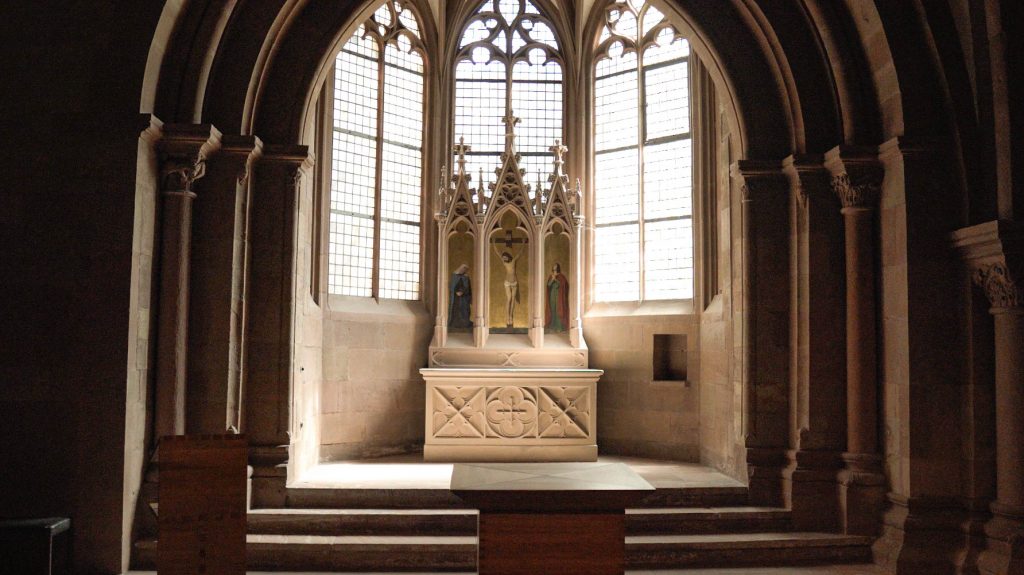
My gaze wanders through the almost square room. The architecture of the memorial symbolizes the fact that it goes on and on. On one side is a large Romanesque portal. This contemporary witness of the first hour has been bricked up in the meantime. On the opposite side, there is a Gothic portal that testifies to the next construction phase of the Mainz Cathedral and another era.
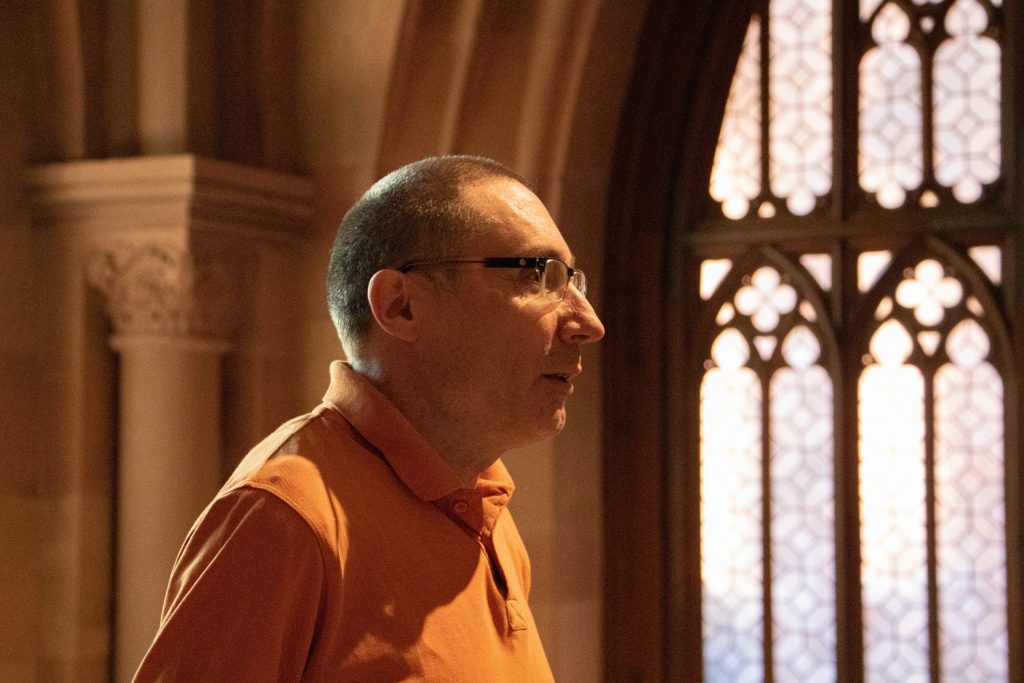
Mainz Cathedral is one of the three Rhenish imperial cathedrals, along with Speyer and Worms. As such, it documents over a thousand years of history of the German Empire. In its history it experienced several fires and destructions. The cathedral has been repeatedly renovated and supplemented with new architectural features. It is all the more impressive that Mainz Cathedral has preserved such a wealth of objects, tombstones, pulpits, statues and paintings. These collections make it something unique, Dr. Wilhelmy tells me.
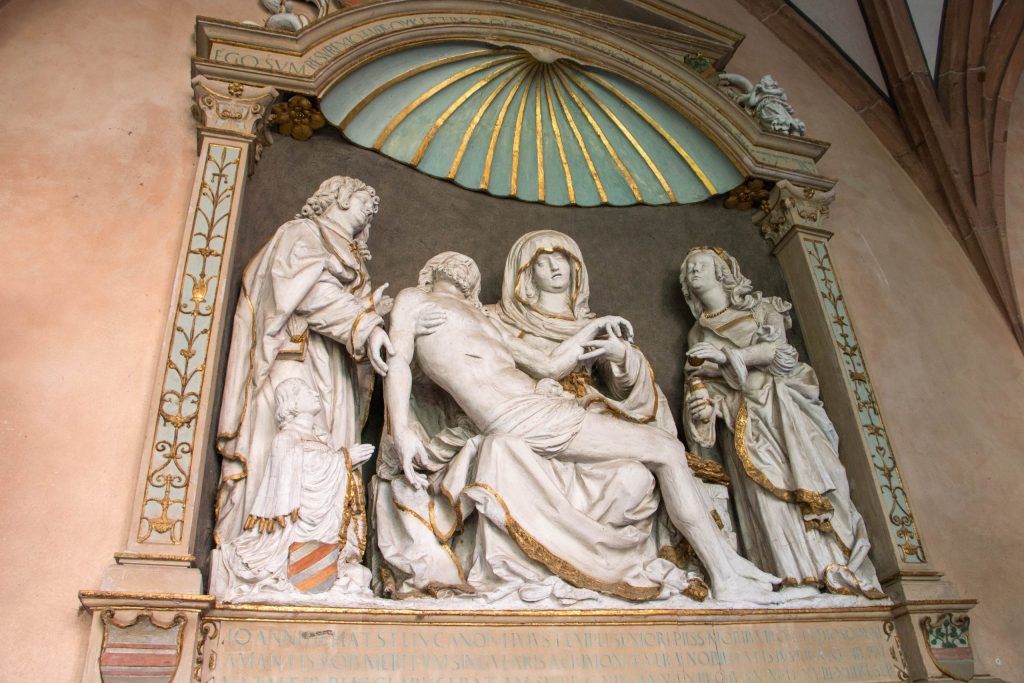
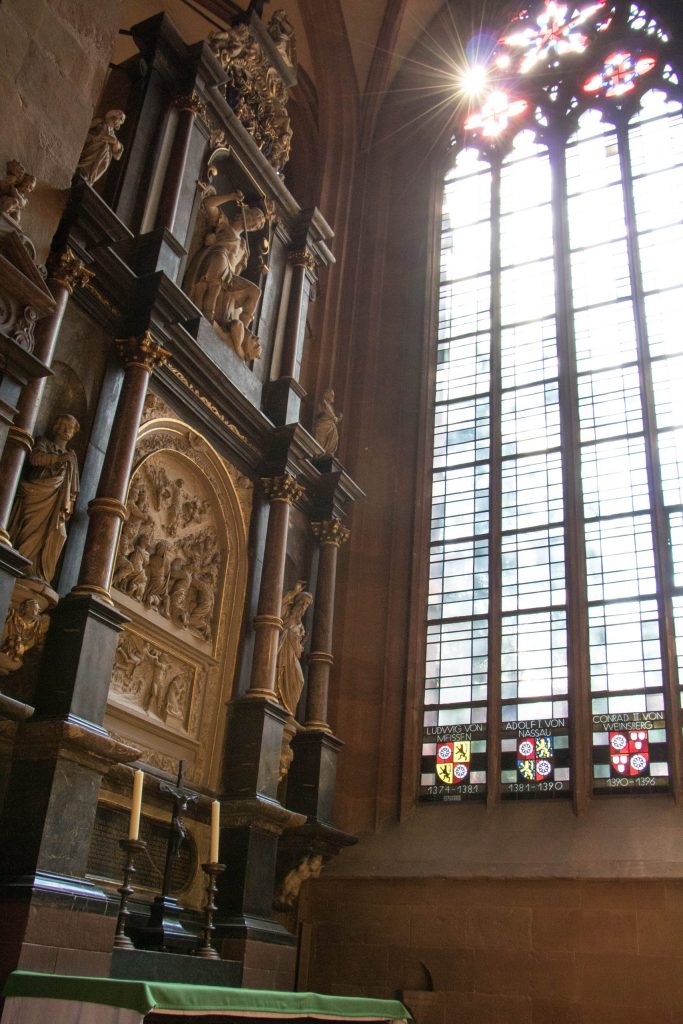
We enter the cathedral through the Gothic portal. Colored rays of sunlight fall through the stained glass windows onto the bright sandstone walls.
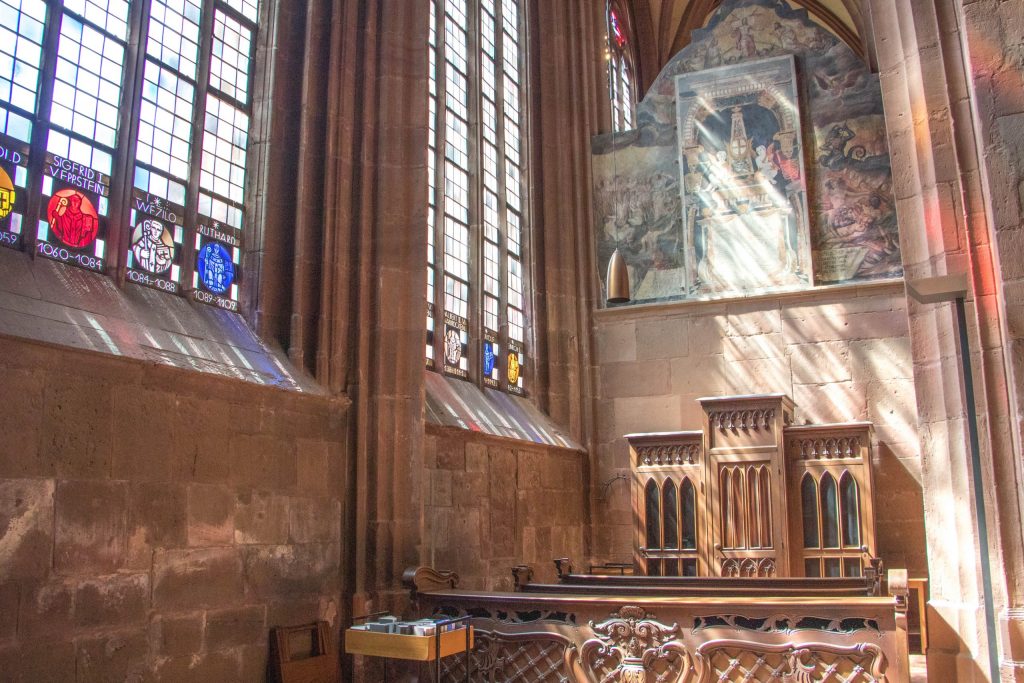
A guest in the hallowed halls
I am overwhelmed by the tranquility as well as the size and spaciousness of the cathedral. During the mass in the evening, these halls will be filled with life again.
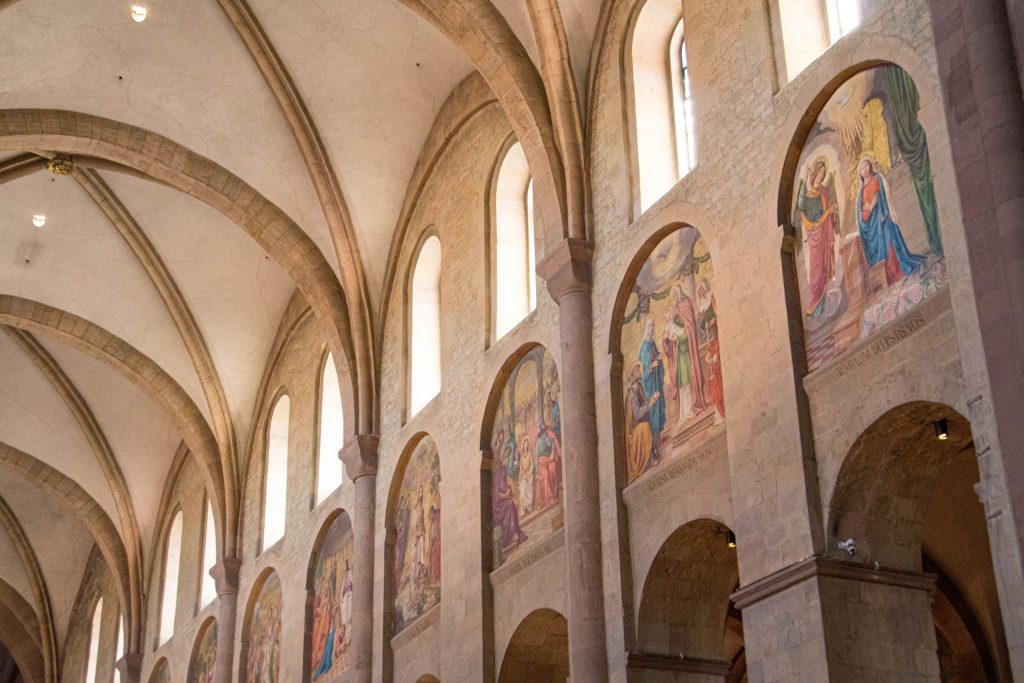
We stroll through the cathedral and Dr. Wilhelmy tells me about the great importance of the cathedral for Mainz. When there is a weekly market, Mainz Cathedral gathers all the citizens and interested people around it. "It is the heart of the city. Mainz without a cathedral, is not Mainz."

At every corner of the cathedral the long history and the connection with the city becomes clear. In the colorful windows I recognize from close up the naming of all previous archbishops. Each is mentioned in its own colorful square by name with dates and a small sketch.
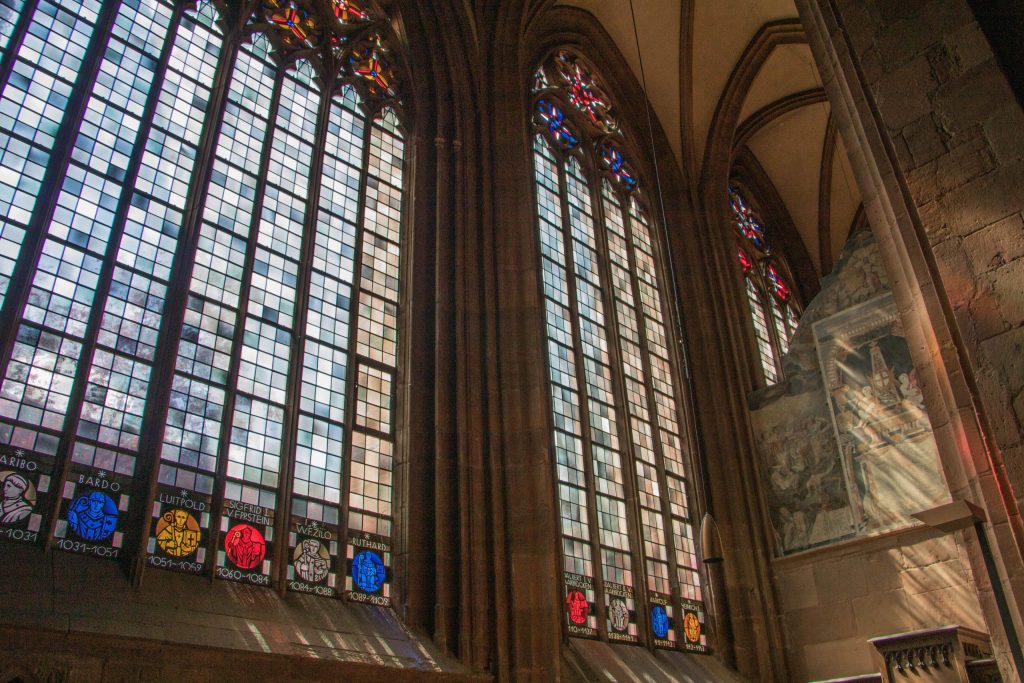
The main altar is the center and the eye-catcher of the cathedral. Rightly so, because it is a little special feature. Unusually, the main altar faces west and not east. This is due to its model, the papal altar in the old St. Peter's Basilica in Rome.
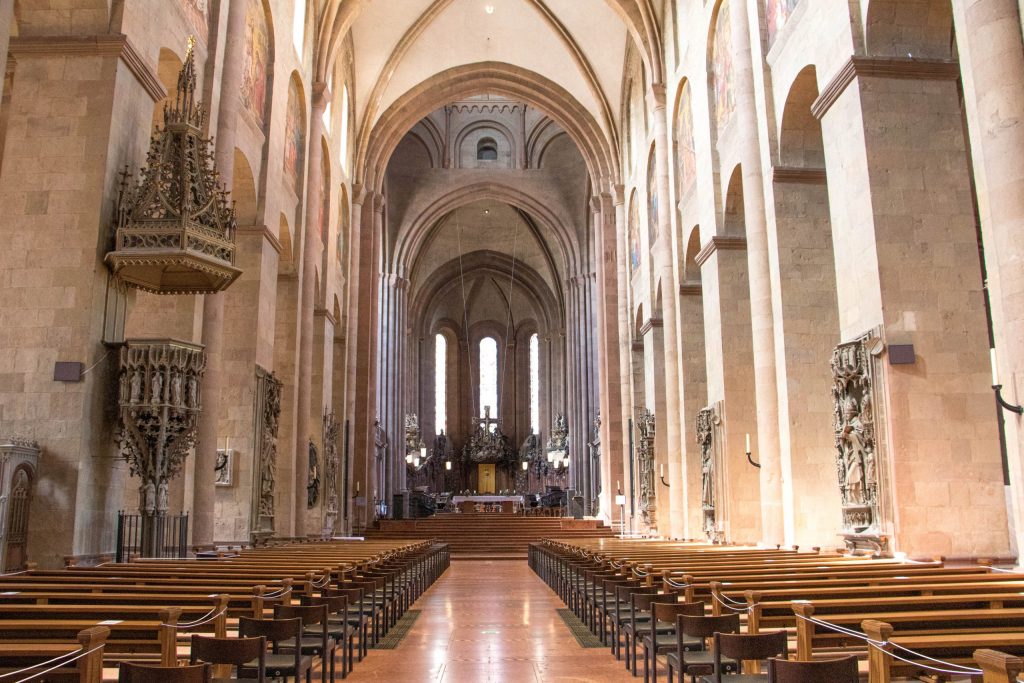
The living cathedral treasure
Our way into the museum leads us past the cathedral treasury. The collection is displayed in well-lit glass cases. Black panels and backgrounds form a modern contrast to the reddish sandstone walls.
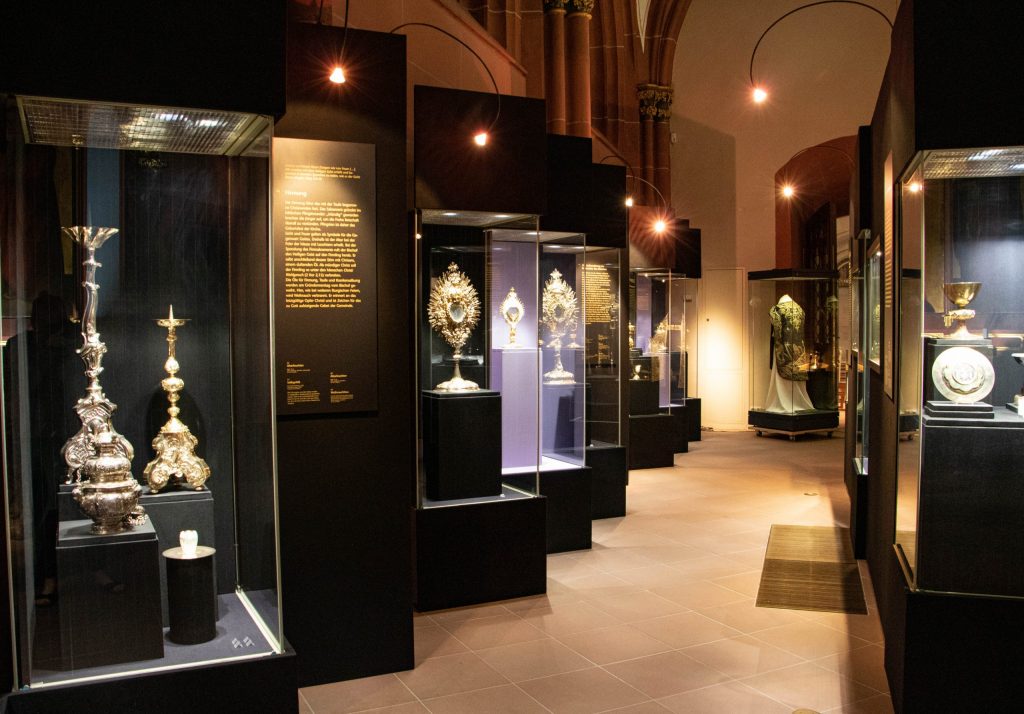
Dr. Wilhelmy explains to me that there are pieces here with centuries of history. Some objects are not so old and also still in use by the archbishops of the cathedral. This is also the reason why the cathedral treasure is called living and growing.
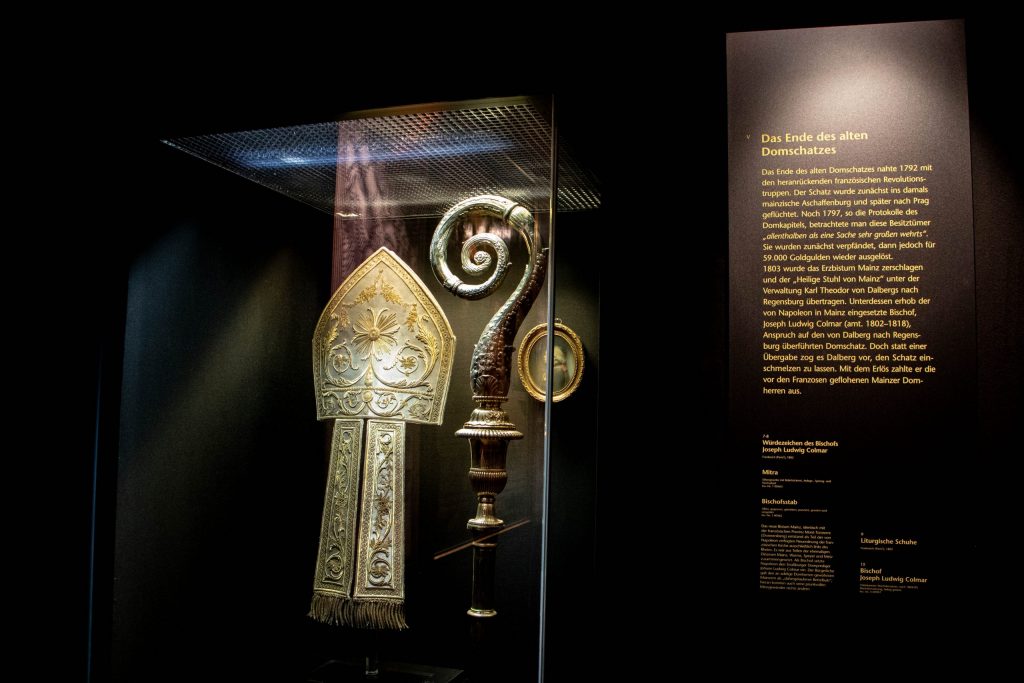
The Episcopal Cathedral and Diocesan Museum of the Mainz Cathedral sets out the almost 2000-year history of the Archbishopric of Mainz and displays paintings, sculptures, treasure art and tapestries. Among them are sculptures by the 13th-century Naumburg Master, 18th-century furniture by Abraham Roentgen or paintings by Lukas Cranach. Dr. Wilhelmy especially loves handling the impressive exhibits.
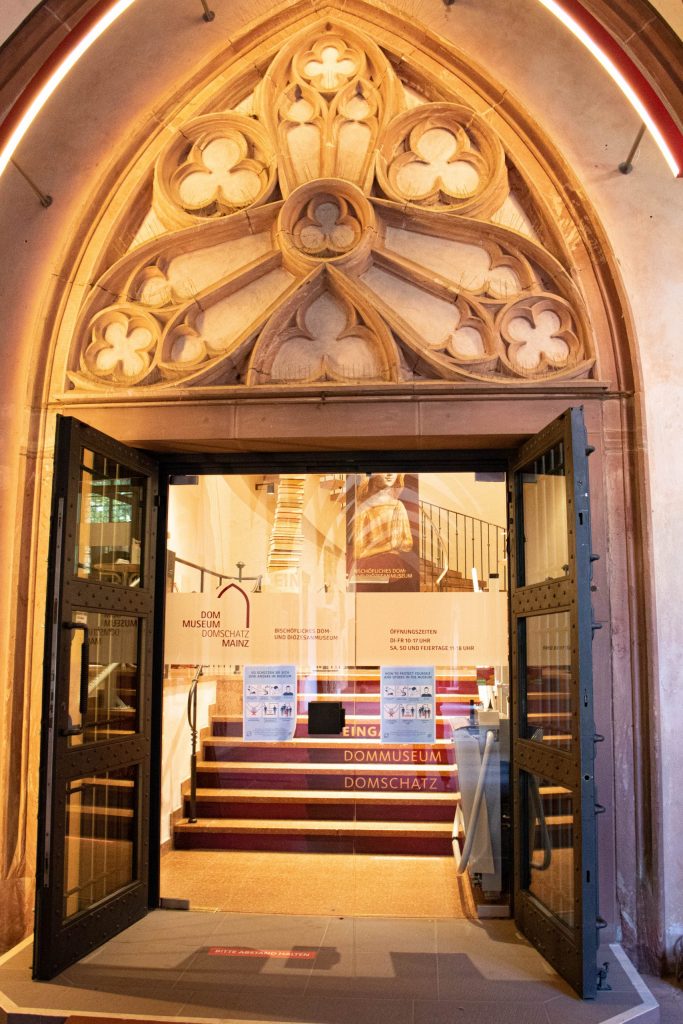

"He'll know the right direction to go."
Reverently, the director of the museum presents me with his favorite exhibit. It is a small fragment of hands, which was worked around 1239 by the Naumburg Master for the resurrection plate of the west rood screen in the cathedral. When the rood screen was dismantled, fragments got into the ground, including this fragment, which was only rediscovered years later.
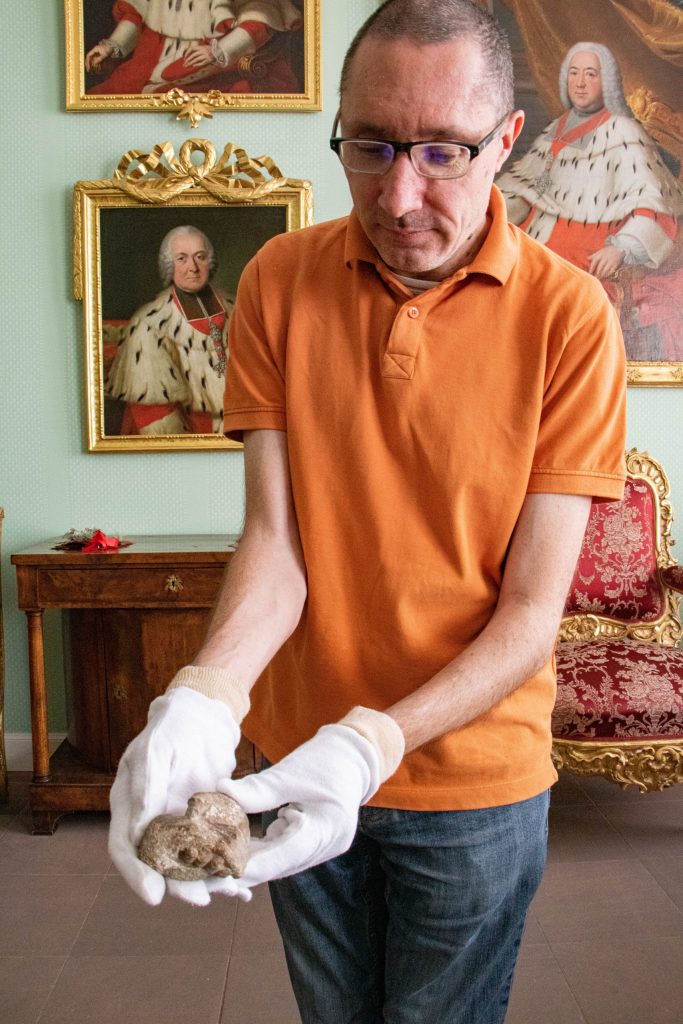
Only with Dr. Wilhelmy's explanation do I understand the story behind the hand fragment. It shows two interlocking hands. The hand of a resurrected person, which is trustingly guided by the hand of an angel to the gate of paradise. "He will already know the right direction," Dr. Wilhelmy interprets the exhibit. The trust and confidence that these hands carved in stone radiate are amazing and also draw me under the spell of the small exhibit.
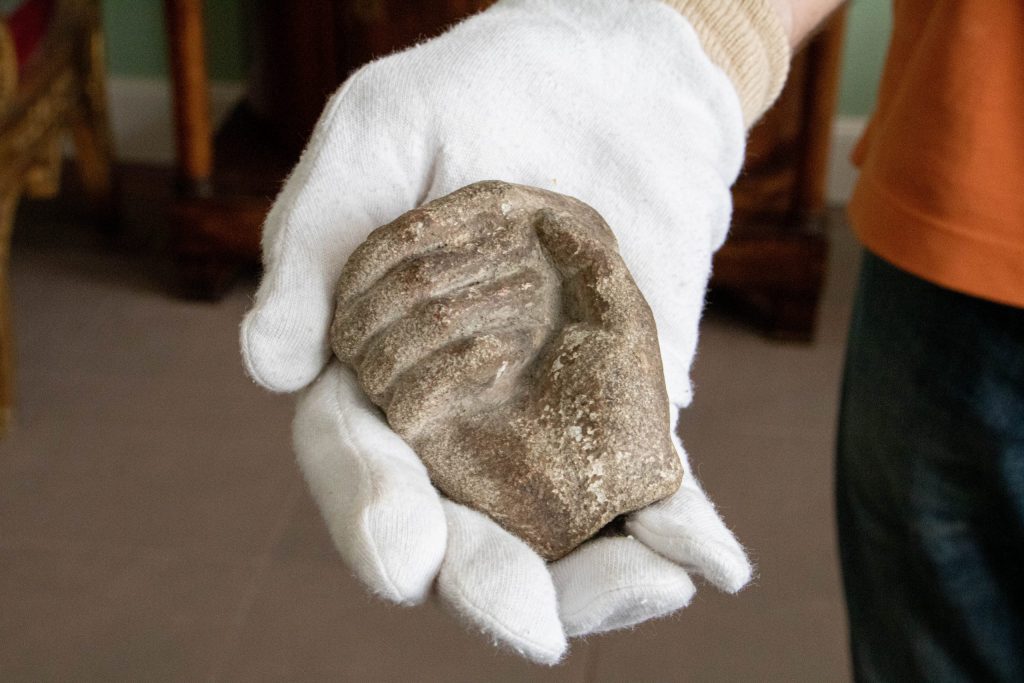
You can see the exhibit among many others in the in the newly designed Early and High Middle Ages department of the view.
While I leave the cathedral again via the cloister, I look back once again and let the peace and quiet take effect on me. I can now understand understand once more why Dr. Wilhelmy repeatedly emphasized in our conversation that the cathedral that the cathedral breathes history and is the heart of the city. be imagined without it.
If you would like to experience the tranquility of the cathedral outside of service times, you can find out more at the Website of the Diocese of Mainzwhen the cathedral is open. The opening hours and all other information about the collection and current exhibitions you will find on the website of the Episcopal Cathedral and Diocesan Museum.
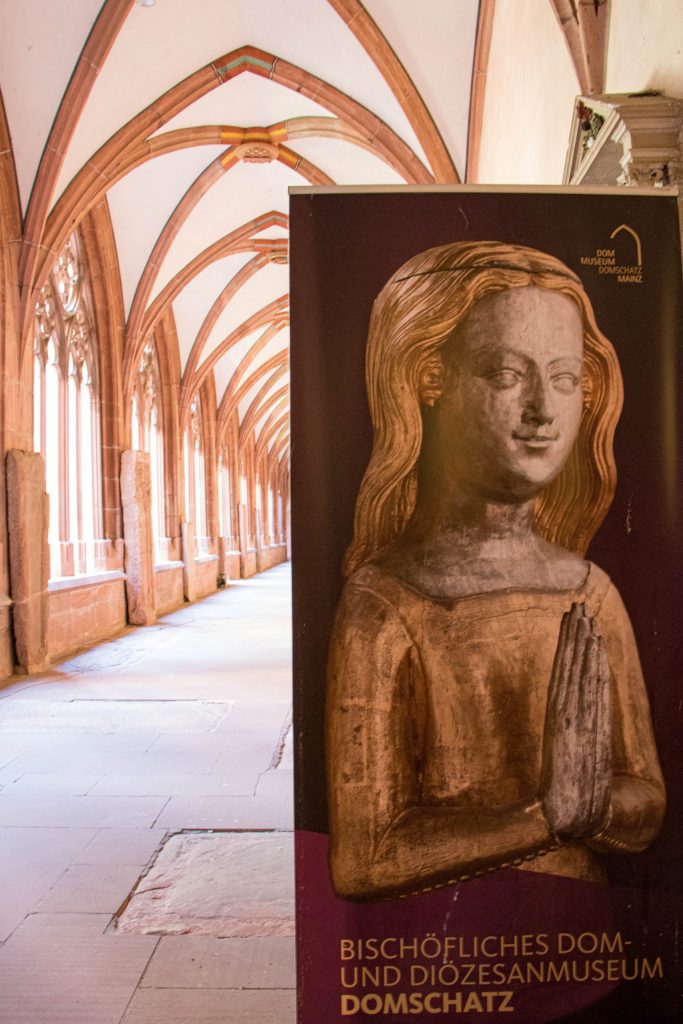
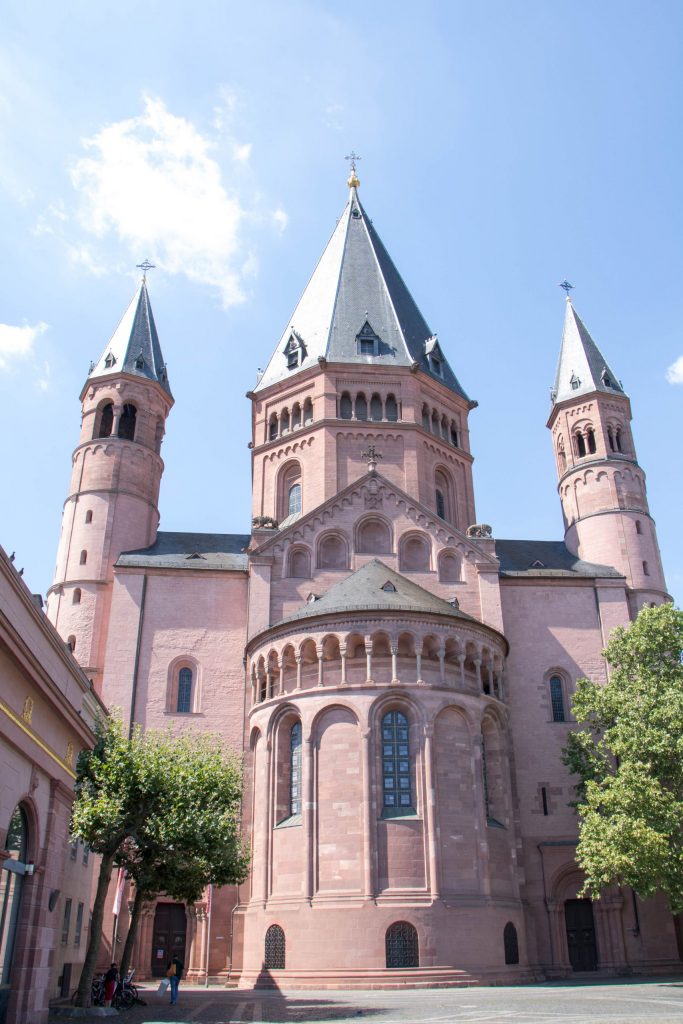


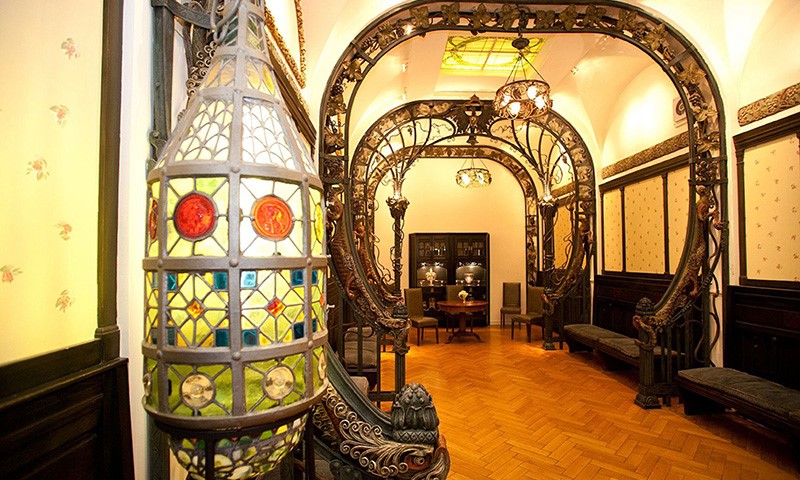
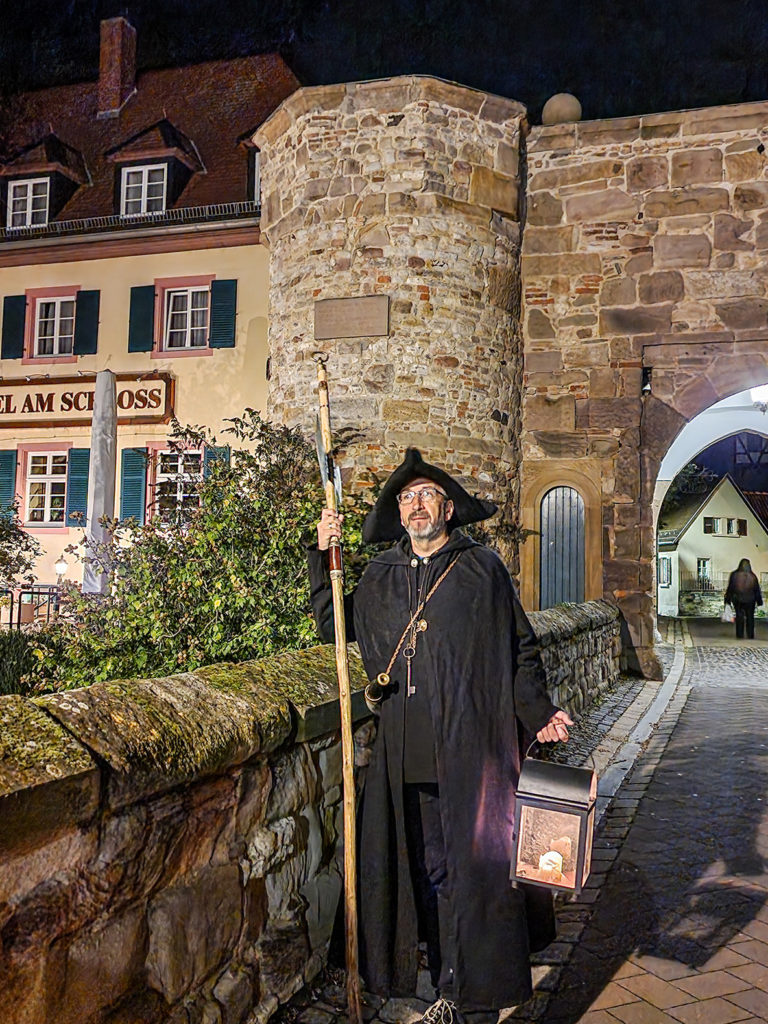
2 Responses
Thank you for this beautiful post.
How I would love to climb the cathedral towers myself and enjoy the sight with my own eyes. Do you know if there is any possibility to do so?
Hello Katrin Wohlleben,
thank you for the kind words. Regarding your question: Unfortunately, it is not possible to climb the towers of the cathedral for security reasons.
Greetings